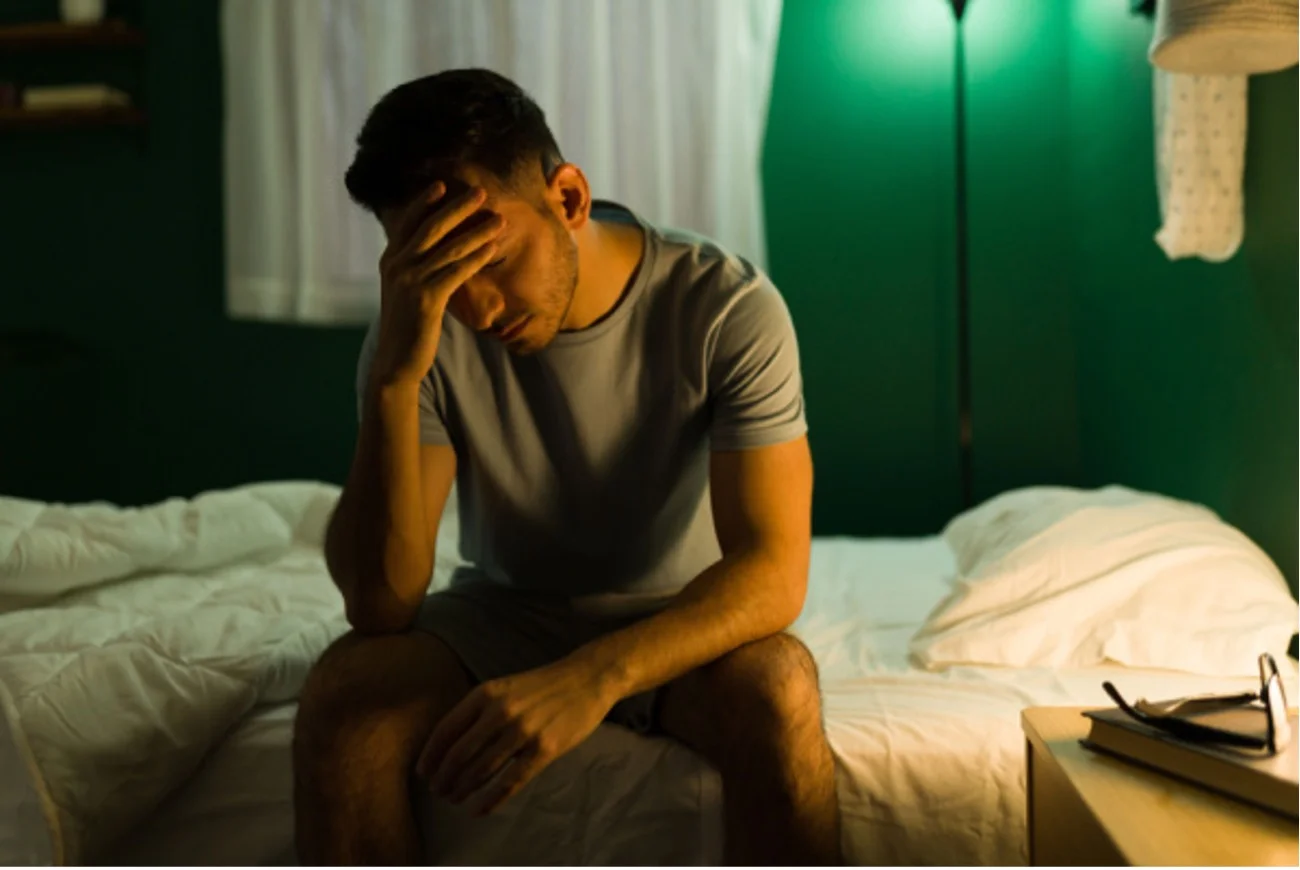Understanding Binge Drinking Disorder: What It Is, Effects, and Treatment
Binge drinking disorder is a serious and dangerous condition.
Not only is binge drinking disorder potentially fatal, but it is also one of the leading contributors to the development of alcoholism, also known as alcohol use disorder (AUD) or alcohol addiction.
Luckily, binge drinking disorder can be effectively treated before it causes death or addiction.
What Is Binge Drinking Disorder?
Binge drinking disorder, better known as binge drinking, is typified by consuming large amounts of alcohol in a short period of time.
What technically constitutes binge drinking is defined differently for men and women. This is because men are generally larger than women and process alcohol more efficiently than women.
To meet the diagnostic criteria for binge drinking disorder:
- A man needs to consume five drinks in under two hours.
- A woman needs to consume four drinks in under two hours.
This is what it will take for an average man or woman to reach a blood alcohol concentration of 0.08%, the legal limit for intoxication in most states.
Binge Drinking vs. AUD
Binge drinking disorder is not the same thing as an alcohol use disorder (AUD), or alcoholism. AUD is a distinct condition with different diagnostic criteria.
Binge drinking episodes are singular events, with periods of sobriety in between. The focus is on the intoxication-seeking behavior. Binge drinking disorder does not include alcohol withdrawal symptoms, increased tolerance, or inability to quit drinking.
AUD is characterized by the following features, which do not apply to binge drinking disorder:
- Pattern of alcohol use leading to significant impairment
- Symptoms like increased tolerance, withdrawal when stopping, drinking more than intended, unsuccessful attempts to cut back, excessive time spent using, cravings, and failure to fulfill major responsibilities due to drinking
- Alcohol use persists despite negative impacts on work, relationships, health, and other aspects of life
Binge drinking may be a feature of AUD, but it is not required for diagnosis.
However, AUD and binge drinking are equally serious, and both can be fatal. The two conditions are also closely linked and have what is known as a bidirectional relationship. This means that binge drinking can both cause AUD and worsen its symptoms, and AUD can both cause binge drinking disorder and worsen its symptoms.
Misconceptions About Binge Drinking Disorder

Binge drinking disorder is a common condition, but it is also very misunderstood, especially in popular culture.
According to psychiatric mental health nurse practitioner (PMHNP) Valerie Puffenberger, some of the biggest misconceptions are:
- Binge drinking is just a phase people go through, especially in college.
- Truth: Binge drinking is a serious disorder that can last for years and lead to addiction and health problems regardless of age or environment. It requires treatment.
- You have to drink every day to have a problem. Binge drinking on weekends is harmless.
- Truth: The frequency and quantity of intoxication in binge drinking can cause brain changes and addiction, even if drinking only occurs on weekends.
- People with binge drinking disorder lack willpower.
- Truth: Binge drinking disorder is a complex condition driven by genetic, physiological, and psychological factors — not a lack of willpower. It requires comprehensive treatment and support.
Binge Drinking Disorder by the Numbers
Binge drinking is among the most widespread and damaging forms of excessive alcohol use in the United States. But just how common is binge drinking disorder?
- About 1 in 6 American adults engages in binge drinking.
- Of those who binge drink, at least 25% do so at least weekly.
- Over 90% of Americans who excessively drink engage in binge drinking.
- Approximately 25% of Americans between the ages of 25 and 34 experience binge drinking disorder, more than any other age range.
- Binge drinking is more common among men than women in all age ranges, although the gap has been shrinking over time.
- Binge drinking is most common in households earning more than $75,000 per year, in non-Hispanic white households, and in residents of the Midwest.
Binge drinking disorder should always be taken seriously, regardless of the age, gender, or location of the sufferer. Not only can binge drinking kill, but it is also a warning sign of a growing addiction.
What Causes People to Binge Drink?
Binge drinking disorder is a common disorder that impacts millions of people. Each and every case of binge drinking disorder is caused by a unique set of factors that varies from person to person. However, some of the most important and common causes of binge drinking include:
- Family history of binge drinking disorder or alcoholism
- Beginning alcohol use, especially excessive alcohol use, at a young age
- Social and peer pressure
- High levels of stress and/or poor stress coping mechanisms
- The presence of mental health conditions
- Certain personality traits such as impulsivity, sensation-seeking, and low tolerance for frustration
- Genetic factors, especially those responsible for alcohol processing or how alcohol makes the body feel
- Environmental factors, such as drinking culture and ease of alcohol access.
- Past traumatic experiences
- Both low or high socioeconomic status
- Both lack of or high levels of education
- Being a member of certain professions, including lawyers and hospitality workers
- Exposure to advertising
Health Risks of Binge Drinking Disorder

Binge drinking disorder is a serious and often fatal medical condition that causes significant short- and long-term health risks. Luckily, most of these can be prevented or reversed if binge drinking ceases, especially if treatment is sought while the patient is still young or their binge drinking has not progressed.
Some of the most common and serious short-term health risks of binge drinking disorder include:
- Alcohol poisoning, which may be fatal
- Injuries, including fatal ones, as a result of impaired coordination or judgment
- Violence, both as a victim or perpetrator
- Sexually transmitted diseases or pregnancy as a result of unprotected sex
- Blackouts, or periods of memory loss
- Dehydration, which may be fatal
- Vomiting and nausea
- Hangovers and associated electrolyte imbalances, headache, and fatigue
- Drowning death as a result of choking on one’s own vomit
- Digestive problems, including irritation to the stomach lining, gastritis, ulcers, and gastrointestinal bleeding
- Kidney stones
- Death
Some of the most common and serious long-term health risks of binge drinking disorder include:
- Alcohol use disorder, also known as alcoholism or alcohol addiction
- Many forms of liver disease and failure, which may be fatal
- A variety of heart problems and an increased risk of heart attack
- Neurological issues, including brain damage, cognitive impairment, and Wernicke-Korskoff syndrome
- A variety of cancers
- Worsening of the symptoms of a range of mental health conditions, including an increased risk of suicide
- Relationship damage
- Social, economic, and legal consequences
- Stress and/or anxiety as a result of many of the impacts of binge drinking
- Death
Treatment Options for Binge Drinking Disorder
Because binge drinking disorder can cause death in so many ways, it is critical that sufferers find treatment quickly. Luckily, there are thousands of treatment programs throughout the country that are dedicated to helping patients heal.
Some of the most effective treatment plans for binge drinking disorder include:
- Medically supervised detox
- Inpatient rehab
- Outpatient rehab
- Aftercare
We’ll cover these in more detail below.
Medically Supervised Detox for Binge Drinking Disorder
Medically supervised detox, also known as detox or detoxification, is a process by which medical staff monitor the patient and provide them with medications and other treatments while they go through withdrawal.
While detox is highly recommended for almost all substance abuse issues, this is especially true for binge drinking disorder. This is because alcohol withdrawal symptoms can be deadly under some circumstances.
The goal of detox is to keep patients safe and comfortable as they go through withdrawal and ensure that they are in the best possible mindset to begin further treatment.
Inpatient Rehab for Binge Drinking Disorder
Inpatient rehab requires patients to live at a residential facility where they also receive a variety of treatments and therapies. This step typically comes after the patient has been through detox.
Inpatient rehab removes patients from enablers, triggers, and underlying causes of their binge drinking disorder. Inpatient rehab also allows for around-the-clock monitoring and is widely agreed to provide the greatest likelihood of successful long-term recovery.
Outpatient Rehab for Binge Drinking Disorder
Outpatient rehab requires patients to come to a rehab facility for treatment sessions but live elsewhere. Outpatient rehab provides patients with greater flexibility and allows them to continue meeting personal, financial, professional, familial, or legal obligations while still receiving treatment.
Outpatient rehab is also often used as a step-down level of care after an inpatient program is completed and is generally less expensive than inpatient rehab.
Aftercare for Binge Drinking Disorder
Aftercare is an umbrella term used to describe a wide range of treatments and therapies for people in recovery. Examples of aftercare include support groups like Alcoholics Anonymous, ongoing therapy, alumni programs, and sober living homes.
Living in Recovery from Binge Drinking Disorder

Relapse, or the return to alcohol use, is one of the primary concerns for anyone living in binge drinking recovery. Luckily, there are thousands of techniques and strategies available to help patients maintain their sobriety.
Puffenberger provides the following tips to help you stay on the path to recovery and abstain from binge drinking:
- Seek ongoing therapy.
- Avoid people and places that trigger the urge to binge drink. Build a sober support community.
- Develop new hobbies, activities, and goals to fill time constructively rather than drinking.
- Learn techniques like urge surfing and mindfulness to manage cravings when they arise.
- Be accountable and monitor drinking urges and behaviors. Have a plan if relapse occurs.
- Address any co-occurring mood disorders like anxiety or depression.
- Focus on overall health, nutrition, sleep, exercise, and social connection.
- Keep going to support groups.
- Take it one day at a time.
Get Help for Binge Drinking Today
Binge drinking disorder is a very serious problem with very serious consequences, which can include death. If you or your loved one is binge drinking, it may seem as if your life is out of control. Luckily, there are treatment professionals waiting to help you overcome binge drinking and get your life back.
Legacy Healing Center believes that a holistic approach to treatment is the only way to effectively help binge drinking sufferers achieve lasting sobriety. This holistic approach heals all the components of substance misuse, including the mind, body, and spirit.
Call 888-534-2295 today to speak with a Legacy staff member about your treatment options.
Binge Drinking Disorder FAQ
What are the signs and symptoms of binge drinking disorder?
Binge drinking disorder affects every sufferer in a unique way. This means that what symptoms and signs appear will vary dramatically from person to person. However, some of the most common signs and symptoms of binge drinking disorder include:
- Loss of control, especially over emotions, drinking, and certain behaviors
- Intense cravings
- Large amounts of time spent drinking or recovering from drinking
- Neglecting responsibilities as a result of binge drinking or recovering from binge drinking
- Continued binge drinking despite experiencing problems as a result
- Increased tolerance to alcohol
- Withdrawal symptoms when binge drinking is reduced or discontinued
- Unsuccessful attempts at quitting binge drinking
- Loss of interest in previously enjoyed activities
- Binge drinking in risky situations, especially physically dangerous ones
- Legal and social problems as a result of binge drinking
- Drinking to relieve stress
- Secrecy and hiding surrounding binge drinking
- Relationship damage
Is binge drinking disorder considered a mental health condition?
Binge drinking disorder is considered a mental health condition, and a very serious one. However, like alcohol use disorder, it is a mental health condition that also has medical and spiritual health components.
How can I support a family member with binge drinking disorder?
Providing support to a family member with binge drinking disorder can be very challenging, especially if their binge drinking has negatively impacted you. However, family support is critical for the recovery of many binge drinking sufferers, who would otherwise not achieve or maintain sobriety.
Some ways that you can help support a family member with binge drinking disorder include:
- Educate yourself on binge drinking disorder.
- Always communicate compassionately with your loved one.
- Choose the right time and place to have any conversations.
- Be a good listener.
- Encourage and enable professional help.
- Offer treatment support.
- Set and maintain healthy boundaries.
- Seek support for yourself.
- Always remain patient, even if relapse occurs.
- Promote and engage in healthy activities.
- Celebrate milestones appropriately.
- Stay up to date with your loved one and their progress.
Are there medications available to help treat binge drinking disorder?
There are currently no medications approved specifically for the treatment of binge drinking disorder. However, there are several medications used to treat other conditions, especially alcohol use disorder, that are frequently used to treat binge drinking disorder:
- Acamprosate/Campral: Reduces cravings and emotional distress caused by sobriety.
- Disulfiram/Antabuse: Deters alcohol use by causing severe unpleasant reactions to drinking, such as vomiting and nausea.
- Naltrexone/Revia/Vivitrol: Reduces cravings and deters alcohol use by eliminating the pleasurable effects of alcohol.
- Topiramate/Topamax: Reduces alcohol cravings.
- Nalmefene/Selincro: Reduces the urge to drink and the pleasurable effects of alcohol.
- Baclofen: Reduces alcohol cravings.
Please be aware that none of these treatments are considered effective when used on their own, and all require some professional counseling and therapy to be effective.
Sources
- Centers for Disease Control and Prevention. (2022). Binge Drinking.
- National Institute on Alcohol Abuse and Alcoholism. (2023). Understanding Binge Drinking.
- Centers for Disease Control and Prevention. (2022). Data on Excessive Drinking.
- National Institute on Alcohol Abuse and Alcoholism. (2023). Drinking Levels Defined.



